After my last trip to Bangkok I decided that it would have made my life easier if I had found a self-guided tour of some of the main areas in Bangkok that allowed me to wander around the area at my leisure. Rather than walking around aimlessly and realising to my regret that I’ve missed some attraction or sight that if I’d know about it before that I would have made a point to visit.
The Lonely Planet guide is a great starting point but unless you have some local knowledge there are always going to be some hidden gems that are off the well-worn tourist trails that you are going to miss. So I’ve tried to include as many of these as well, together with links to the various attraction’s websites so if you feel the need to know more about them the information is at your fingertips.
The bulk of Bangkok’s ‘must-see’ destinations can be found in the former royal district, Ko Ratanakosin. The first spot I would suggest you visit is the Grand Palace not because it is without a doubt the city’s most famous and popular landmark but because you need to get in early before the cavalcade of coaches arrive and disgorge hundreds of tourists, which is usually about from 10am onwards. The Grand Palace opens at 8:30am, so I strongly suggest that you try and get there before the gates open. The ticket office closes at 3:30 p.m. so if you are going in the afternoon you have to enter before then or you won’t get in at all.
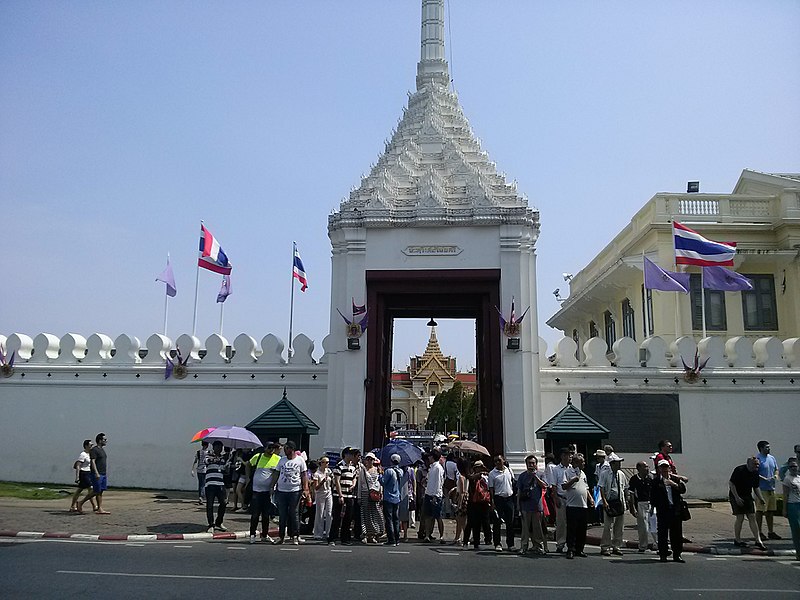
Things to avoid – there will be people at the gate, telling you can’t enter without a ticket, that the ticket office is just down the road, that you can’t enter without appropriate clothing, that the palace is closed, that they are an official guide – don’t listen to them, it is just a con!! They are just trying to part you from your baht.

You don’t need a guide or a ticket to get inside, simply enter the Grand Palace at the large gate (the Wiset Chaisri Gate or Gate of Glorious Victory) on the north side of the complex and work through the courtyard to the ticket booth. Tickets are 500 baht per person, yes I know Thai residents have free entry but it is their country after all (there is also the option of pre-purchasing your ticket online). Here they enforce an extremely strict dress code, so be prepared! They do not permit sleeveless shirts, singlets, short tops, see-thru tops, mini-skirts, short pants, torn pants, tight pants, yoga pants or bike pants. If you aren’t wearing the appropriate clothing you can buy them at the ticket booth. The street directly across the road from the Palace however is lined with shops selling sarongs, t-shirts and pants for people who have not come prepared, these are cheaper than the ones for sale inside the Grand Palace.
If you really feel the need to have a guide then pick an ‘officially sanctioned’ guide from inside the palace courtyard not someone from the street outside. Otherwise for 200 baht you can hire a personal audio guide (you will however need to show your passport or credit card). The ticket office also gives free brochures with a map and explanations about all the main buildings, make sure you get one before you head off.
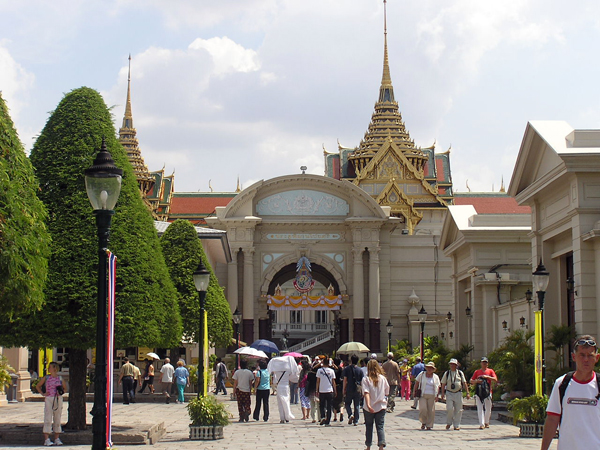
After buying your ticket, the best plan is to go directly to Wat Phra Kaew and then continue around the rest of the Grand Palace – you may notice that your ticket includes a couple of extra attractions, including “Khon” classical masked dance at the Sala Chalermkrung Royal Theatre and access to the Queen Sirikit Museum of Textiles but I’ll explain that later, for now head to Wat Phra Kaew before those crowds engulf you.
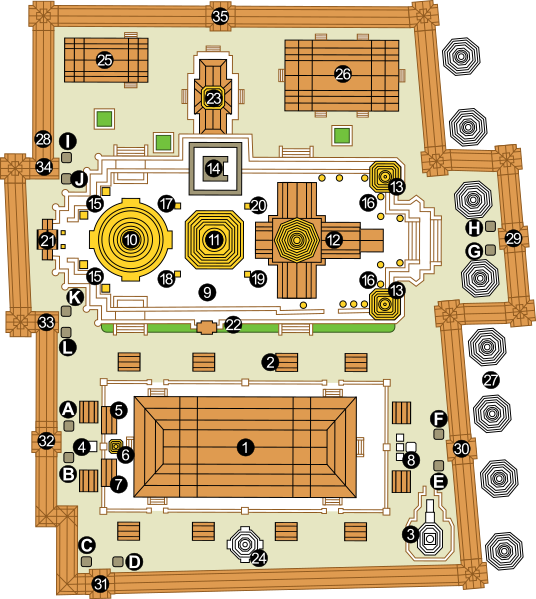
The temple is officially known as Wat Phra Sri Rattana Satsadaram (which is a bit of a mouthful!), the translation of which is “the residence of the Holy Jewel Buddha”, so its better known as the Temple of the Emerald Buddha. The main entrance gate is on the temple complex’s southwest corner (32), you should notice a black stone hermit statue in front of you as you enter (4). This statue is Cheewok Komaraphat, the Patron of Medicine and many locals with sick relatives make an offering of incense and touch a damp Lotus flower to the top of their head for good luck.
Immediately behind the hermit statute is the Phra Phothi That Phiman (6), a consecrated tower containing a ringed chedi that King Rama IV brought back from one of his journies to the north.

Now on either side of the hermit statue you can’t help noticing two imposing 5m high statues facing the temple, these are the yaksha (guardian demons). The one on your left (A) with the green face is Intarachit and the one on the right (B) with the red face is Suryapop. They both have a bamboo shoot as their crown. There are six pairs of these yaksha surrounding the temple, their role is to protect the Emerald Buddha from evil spirits.
Flanking the hermit statute next to the temple (which is actually the rear of the temple) are two white walled buildings with gold gilded windows, these are Hor Phra Rajkoramanusorn (5) and Hor Phra Rajphongsanusorn (7), both of which house a collection of Buddha images. Unfortunately neither appeared to be accessible.
Work your way around the side of the temple and you’ll pass the twelve salas or open shelters (2), where learned scholars sat and recited the Jatakas (stories of previous lives of the Buddha).

This temple is considered the most holy of all temples in Thailand, which is why there are literally throngs of people trying to get in. Before you enter the Phra Ubosot (ordination hall) you need to take your shoes off – there are shoe racks along the low western side wall but it is utter chaos with hundreds of people taking off and putting on shoes (perfect place for pickpockets – so be aware). Seriously it can get more crowded here then at Grand Central station in New York at rush hour.
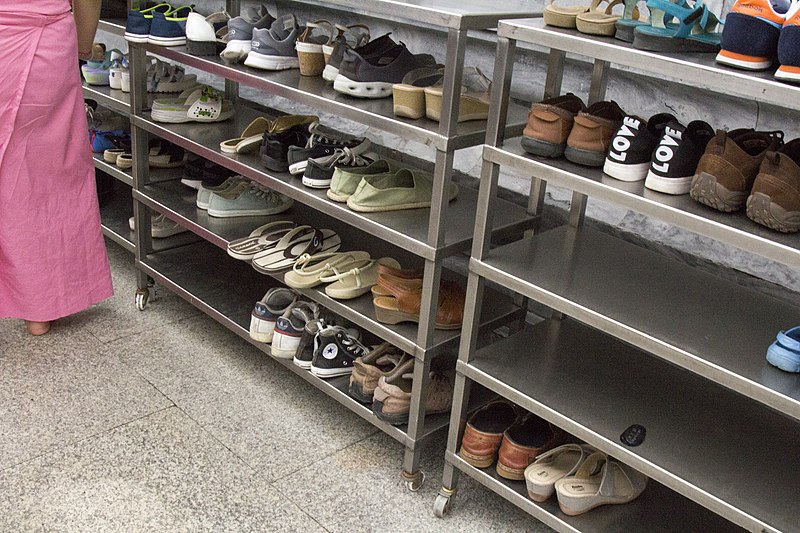
Now that you have been de-shoed make your way around in your socks to the entrance of the Ubosot (1). It is against the rules to take photos or videos inside the temple, which is enforced by the guards but if you’ve got a decent zoom lens on your camera you should be able to take a few shots from outside looking in. As this is a house of worship you need to be respectful of the devotees praying – you won’t be allowed to stand on the main floor and when sitting never point your feet towards the Buddha statues.
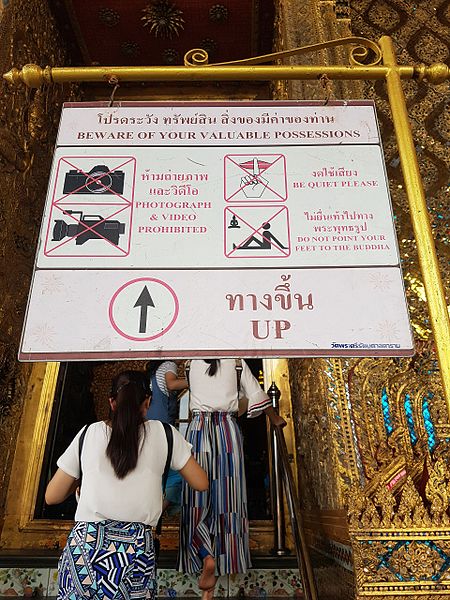
Once inside you will probably be overwhelmed by the grandeur and magnificence of it all. There is so much shining, glittering bling in every direction. Golden images, golden deities, golden guardians, and an extremely elaborate golden altar fills the back of the room. High up near the ceiling, just below the sparkling chandeliers, sits a small green object bedecked in gold, on a golden pedestal.

The Emerald Buddha is just over 66cm (26 inches) tall and its not an actual emerald but is made out of jade or possibly jasper (emerald in Thai refers to its colour not the stone). This statute is the most sacred relic in Thailand, hence the growing crowd of admirers. As such the only person allowed to touch it is the king, or if he is indisposed the crown prince. Three times a year the king gives the Buddha statue a ceremonial costume change. Depending upon when you view it the costumes are; a diamond encrusted golden robe through the hot season, a solid gold robe in the cool season and a gold-plated monk’s robe with headdress for the rainy season.
Once you’ve visually taken in this golden display is back outside to fight off the crowds and reclaim your shoes – mental note make sure you remember where you left them.
In-front of the Ubosot you see the Chao Mae Kuan Im shrine (8) which looks like an outdoor cafe with its urns and umbrellas however however this is where you can burn some incense or make some other offerings to Buddha. You might be able to spot a stone statue of the Chinese goddess of mercy, Kuan Im, and two cow figures, representing the year of King Rama I’s birth.
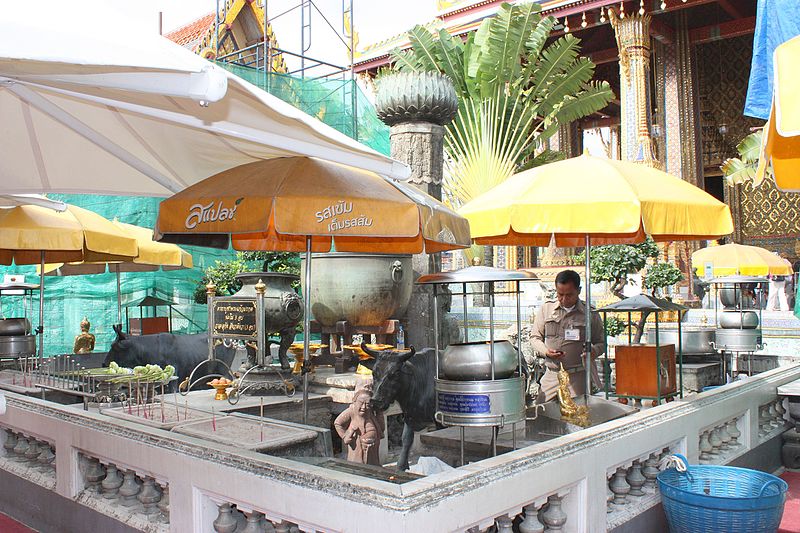
You should also be able to spot another pair of yaksha, this time it is Thotsakhirithon (E) , with the green face and elephant nose and Thotsakhiriwan (F), with the blue face and elephant nose – guarding the Na Wua Gate (30).

Tucked in the southeastern corner of the courtyard is the Ho Phra Khanthararat, (3) which comprises two structures built on the same white stone base, an ancient gilt stupa at the rear and a ornate blue and yellow tiled chapel at the front, housing the Gandhara Buddha (used in ancient rainmaking rituals).
Make sure to also look for the temple’s elephant statues as it is good luck to circle three times around one and then rub its head.
Now you can take your time and wander off to the upper terrace – you won’t be able to miss the pair of giant yaksha, Atsakanmala (G), with the blue face, and Chakkrawat (H) , with the white face, guarding the Koei Sadet (front) gate (29).
The first things that stand out are the two golden gilded chedi (13) on either side of the stone stairs but you want to look up close. Surrounding the base of each of the chedi are a series of yaksha that appear to be holding up the base of these structures. These chedis were built in memory of the parents of King Rama I.

The impressive building that you are now facing is the Prasat Phra Dhepbidon (12) or the Royal Pantheon. This structure was originally built by King Rama I to house the Emerald Buddha but after it was finished it was found to be too small to perform the ritual ceremonies. At present inside are life sized statues of all Thailand’s eight kings in bronze and gold however the Royal Pantheon is only open to visitors only for a single day each year (6 April – Chakri day).

Right behind the Royal Pantheon is the Phra Mondop (11), which literally means the library of palm-leaf scriptures. This royal library is never open to the public because the the holy scriptures inside, the Tripitaka or triple basket, are considered to be too sacred for the eyes of us mere mortals.
Surrounding the Phra Mondop are four monuments (17-20) which are dedicated to the kings of the reigning Chakri dynasty.
At the western end of the terrace you’ll spot a huge golden, bell-shaped stupa, Phra Sri Ratana (10), which is said to contain a piece of the Buddha’s sternum. However it is encased in the stupa so I guess we will never ever know for sure. It is the tallest structure in the Grand Palace complex and can easily be seen from the Chao Phraya River.
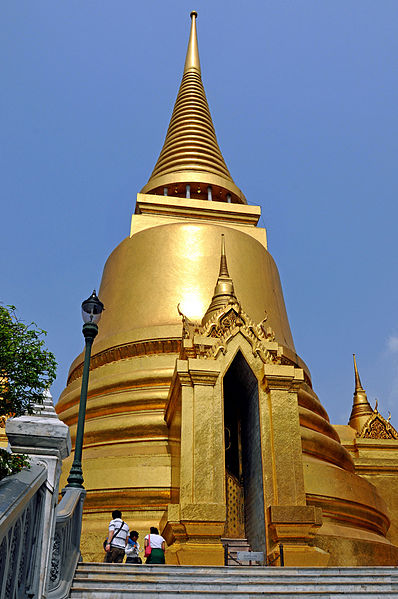
The last structure on the upper terrace is the model of Angkor Wat (14), which is on the northern side of the Phra Mondop. The story is that in 1860, King Mongkut ordered his generals to lead 2,000 men to dismantle Angkor Wat in Cambodia and bring it back to Bangkok. However, the king’s order could not be fulfilled, his army faced opposition and couldn’t survive the jungles of Cambodia. So instead he had a full scale model of the temple complex built instead.

To the north of the upper terrace you’ll find the Phra Sawet Kudakhan Wihan Wot (23), also known as the Phra Viharn Yod (the Meeting Room). This subtle white concrete structure is covered in colorful ceramic pieces with the roof resembling a traditional multi-tiered Thai crown. The building contains a number of Buddha images, the most important of which is the gold, silver and copper Phra Nak Buddha. However like most of the buildings in the temple complex it is closed to the public and only members of the royal family have access to the Buddhas stored inside.
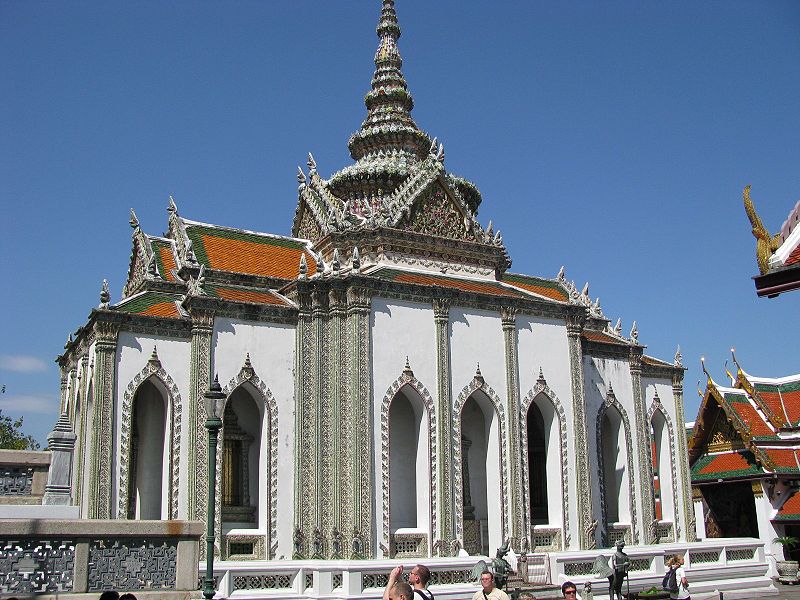
In the north-western corner of the temple courtyard is the Hor Phra Naga (25), the building originally housed the Phra Nak Buddha however during the reign of King Rama III he needed a suitable building to store the ashes of the deceased members of the present dynasty. So he had the original building torn down and this structure erected to replace it – moving the Phra Nak Buddha to be stored in the Phra Sawet Kudakhan Wihan Wot.

In the north-eastern corner is the Hor Phra Monthian Dharma (26), an auxiliary library, built by King Rama I’s brother after the first structure burnt down. The key feature is the mother-of-pearl doors, which were salvaged from Wat Borom Buddharam in Ayutthaya. It houses a number of sacred Buddhist texts and is never opened to members of the public.
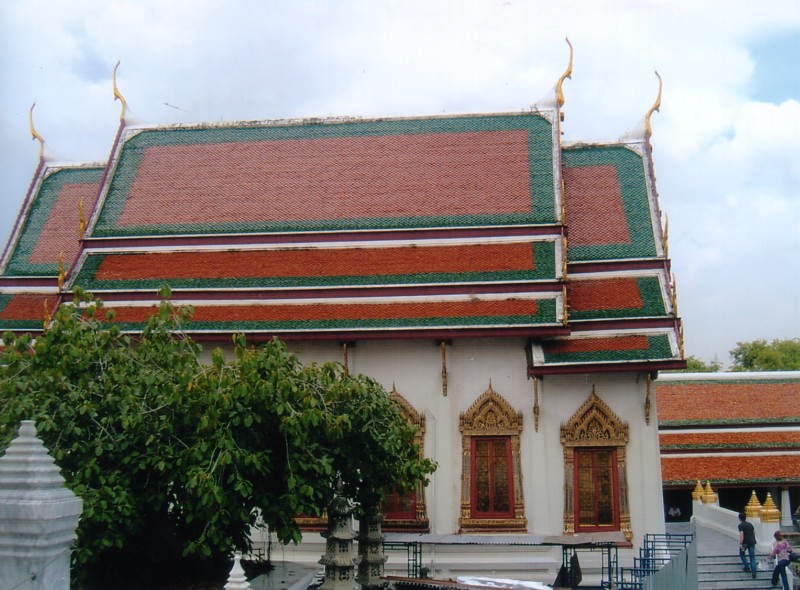
About now you’ll probably want to get out of the heat of the Thai sun and avoid the growing crowds, so I’d suggest that you walk along the colonnaded verandah or cloister that encircles the temple courtyard. Not only are they relatively shaded but they contain a gallery, a series of vivid mural paintings depicting the story of the Ramakien, the Thai version of the Indian Ramayana epic.
Eventually you will make you way around to the exit at the Si Rattana Satsada Gate (31), which connects Wat Phra Kaew and the Grand Palace. The exit is flanked by another pair of yaksha, Wirunhok (C), the one with the dark blue face and Mangkonkan (D), with the green face. Although before you leave the temple complex there is one more landmark to point out, the Belfry (24), constructed by King Rama IV and decorated with colourful porcelain mosaics. The bell is rung only special occasions, such as New Year’s day or the king’s coronation.
Once through the gate you’ll enter the middle court, which is located in the central part of the Grand Palace complex and is where the most important residential and state buildings are located.

The first of these state buildings is the Phra Thinang Boromphiman (28), a two-storey Neo-Renaissance cream stone building with a grey slate roof. This building wouldn’t look out of place in European palace, probably because it was designed by a German architect. Built in 1903 as a home for the crown prince, during the reign of King Rama V, who unfortunately died before it was completed. The building is not open to the public, and serves as the official guest house for visiting Heads of State and their entourages.
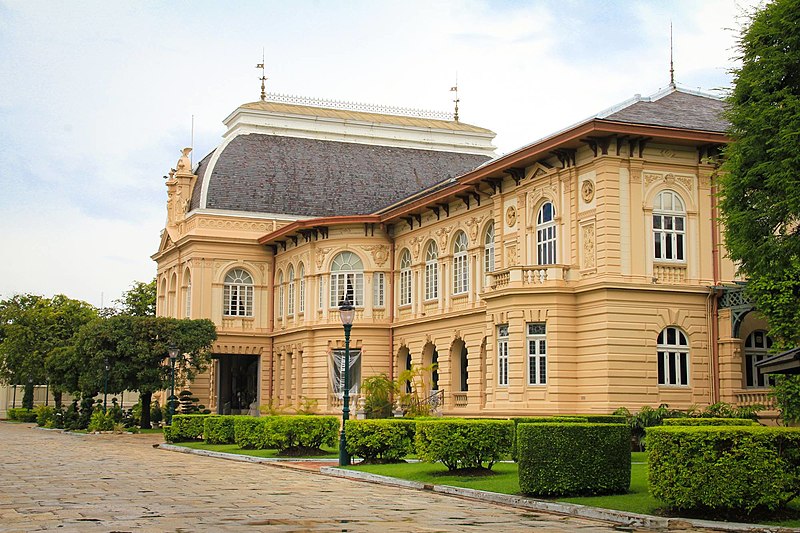
By this time most of the organised tour groups will be speeding by you as they try and meet their ridiculously tight time frames (they are generally only here to show their clients the Temple of the Emerald Buddha).
The next set of buildings you’ll see is the Phra Maha Monthien buildings (8-10), a grand residence which actually consists of seven connecting structures. These traditional Thai style buildings are enclosed by a low wall, as they were once the residential and sleeping abode of the king. From front to back they comprise a public reception hall, ceremonial halls and residential halls at the rear. The Phra Thinang Amarin Winitchai Mahaisuraya Phiman (8) at the front is the most important as it contains the royal audience hall/throne room, where the king officially receives any important visitors. You should also spot a number of minor structures and pavilions surrounding the Phra Maha Monthien buildings (11-16), one of which is the Phra Thinang Dusidaphirom (11), which is the royal elephant-mounting platform – the only way to travel. The other pavilion next to it, the Phra Thinang Sanam Chan (13) was used by the king to sit under whilst he supervised construction projects.
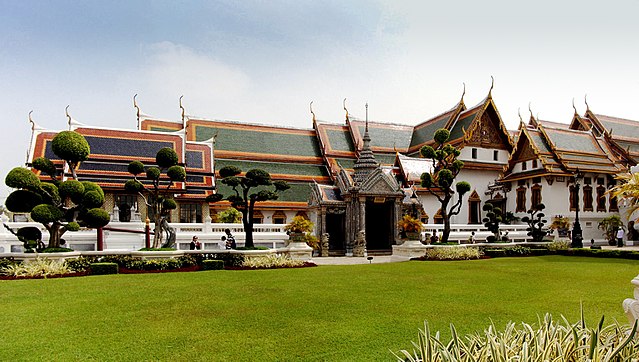
The next building is the Phra Thinang Chakri Maha Prasat (17), a grand three-storey structure built by King Rama V in 1877 as the royal residence. It was designed by a British architect and is an eclectic blend of European and Thai architecture. Originally each of the three wings was meant to have a European style dome however on advice from the Chief Minster they were changed to a Thai style roof with gilded prasats. It is known by locals as the ‘westerner with a Thai hat’. Although King Rama V used it as his residence it now used for state banquets and receptions. The building’s ground floor houses the royal guards and a collection of ancient weapons is displayed in the arcades along the building’s front. The display however is open to the public on weekdays only. On Saturday and Sunday, you can see some of the exhibits through the bars, but there’s no entry to see things close up.
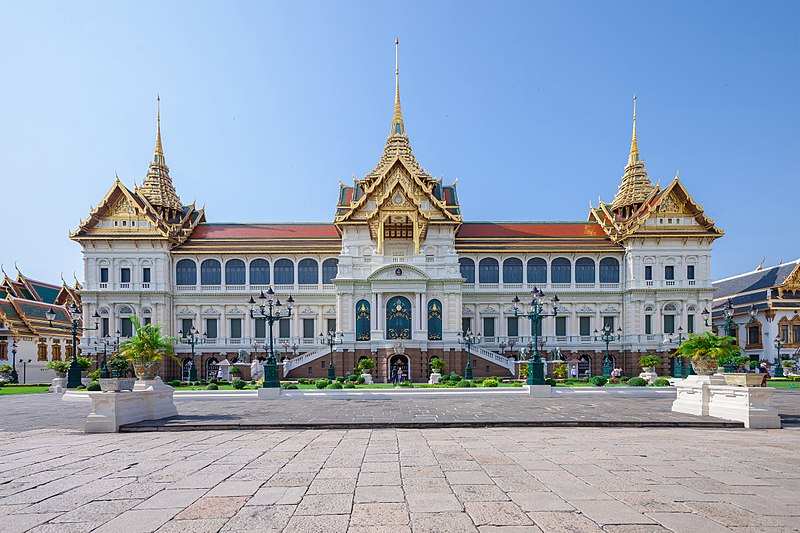
Located next to the royal residence, on the eastern side is a small open pavilion, the Phra Thinang Aphorn Phimok Prasat (23). It is a pavilion which the king used to change his regalia when entering the Maha Prasat premises. It was also used as the king’s royal palanquin mounting platform.

Adjacent to that is the Dusit Maha Prasat Hall or Phra Thinang Dusit Maha Prasat (21), a grand spired hall, built by King Rama I as a replacement for an earlier wooden throne hall which burnt down in 1789. This ornate hall is used for the customary lying-in-state of Thai kings, queens and members of the royal family.
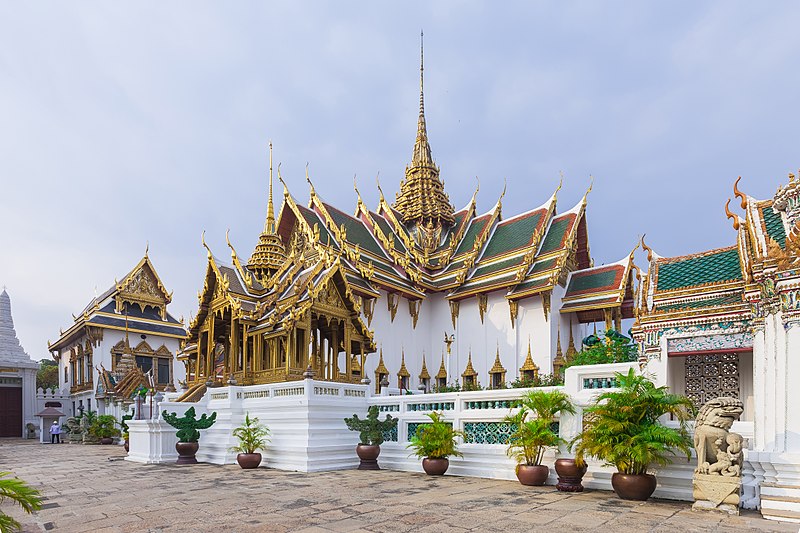
On the other side of this building is the Ho Plueang Khrueang (25), a closed two-storey pavilion, which is linked by a walkway to the Dusit Maha Prasat Hall. This pavilion was built by King Rama VI as a robing room.

By now you will have probably exhausted your supply of liquid refreshments, your legs will be aching and you are dripping with sweat due to the prevailing humidity. So if I was you I would head across the courtyard here to the small shop/cafe – it is air conditioned, has chairs and cold refreshing drinks. I can’t recall what it is called but it is a welcome oasis (the brown building on the map between (25) and (6)).
Once you have recovered head to the two-storey stone Renaissance building with the four ionic columns. This is the Museum of the Emerald Buddha Temple (6), which is free to enter, although most tourist seem to walk right past it, completely oblivious. The building originally housed the royal mint but when the new mint was built in 1902 it was converted into a barracks for the royal guard. In 1982 it was converted into a museum, which houses artifacts from both the Grand Palace and Temple of the Emerald Buddha, including architectural models of the grand palace, royal regalia and Buddha images. Just as important it has air-conditioning.

Now as you are heading out you’ll walk past a couple of nondescript buildings, Bureau of the Royal Household (2) and the Sala Luk Khun Nai (5) but before you head out the gate you should notice a low white building with a circular porch. This is the Queen Sirikit Museum of Textiles (3). If you remember when you bought your ticket it included entrance to this museum. It is open from 9:00am to 4:30pm. The building was previously the Ministry of Finance and the Office of Royal Ceremony but in 2003 was converted into a state of the art museum. There is literally no comparison between it and the Museum of the Emerald Buddha Temple. It houses an amazing collection of textiles, fabrics and clothing. It also has a coffee shop and store. Best of all it is totally air-conditioned.
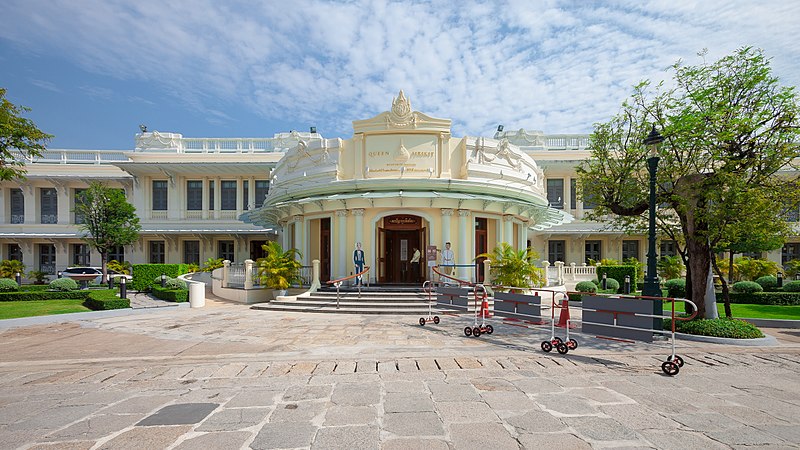
One last thing before you leave take a look across the grass courtyard and imprint the view of Wat Phra Kaew in your memory banks.
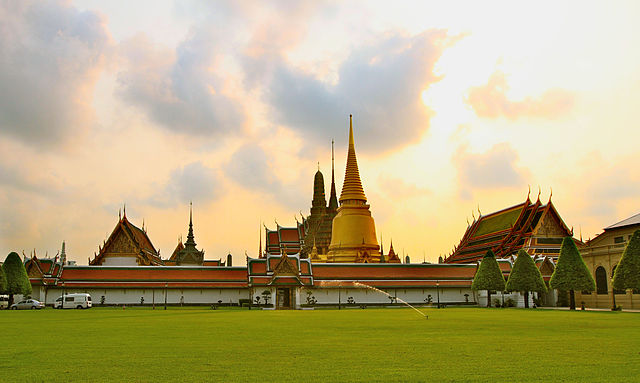
If you found this guide helpful you may want to check out my guides to some of the other sights in Bangkok:
- Chatuchak Weekend Market
- Wat Pho (Temple of the Reclining Buddha)
- Wat Arun (Temple of Dawn)
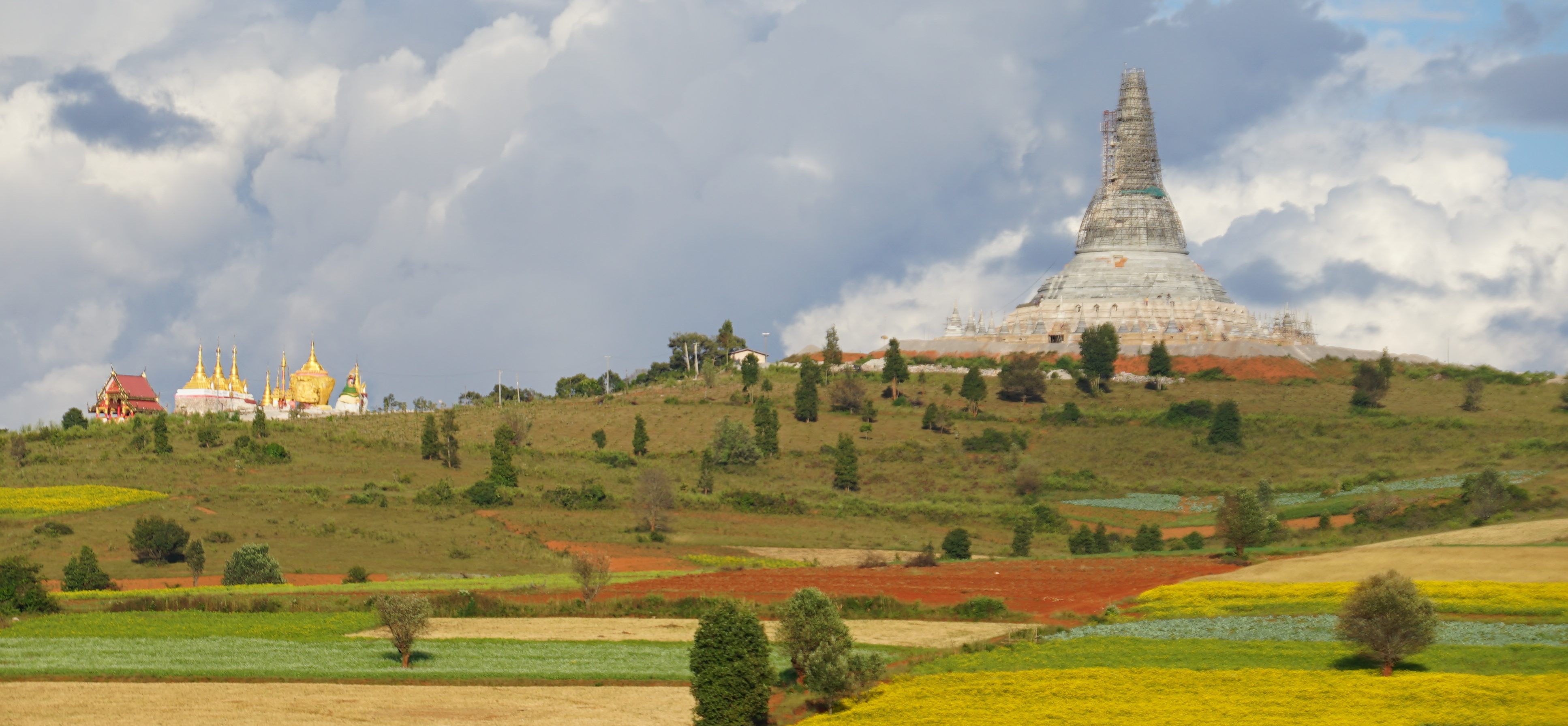




















2 thoughts on “Self-Guided walking tour of the Grand Palace (Bangkok, Thailand)”